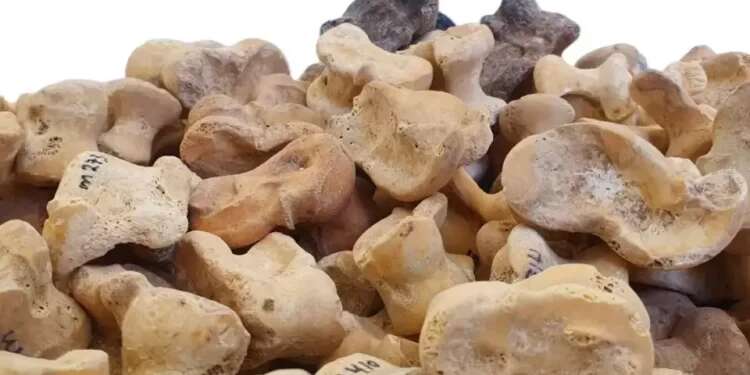A rare assemblage of 530 'astragali' – animal knuckle bones used for gambling and divination – dating to the Hellenistic period some 2,300 years ago was unearthed in Beit Guvrin-Maresha National Park of southern Israel.
Follow Israel Hayom on Facebook, Twitter, and Instagram
This exceptionally large collection, the results of which were first published recently in the British archaeological journal Levant, was discovered by Dr. Ian Stern several years ago in underground caves beneath the ancient city of Maresha.
Dozens of dice bore Greek inscriptions – some were engraved with the names of gods associated in antiquity with human wishes and desires: Aphrodite, the goddess of fertility, love, and beauty; Eros, the god of love; the god Hermes; the goddess Hera; and Nike, the goddess of victory.
On other bones, game instructions and various game roles are engraved, such as "Thief," "Stop," or "You are burned."
"The assemblage shows that in ancient times of distress, as today, people sought help from external factors, in magic and spells, and in the world of the unknown. We have examples of children buried with similar gaming dice. The cubes, which were a popular gaming activity, had a role in accompanying children to the [afterlife]," she aid.
Perry-Gal continued to explain that the "Hellenistic city of Maresha was one of the period's melting pots" in the region.
"Different populations and cultures lived side-by-side here as neighbors, all subordinate to the Hellenistic rule. There lived here Edomites, Phoenicians, Nabateans, and Jews, and the different peoples and cultures influenced each other."
This article was first published by i24NEWS.
Subscribe to Israel Hayom's daily newsletter and never miss our top stories!




